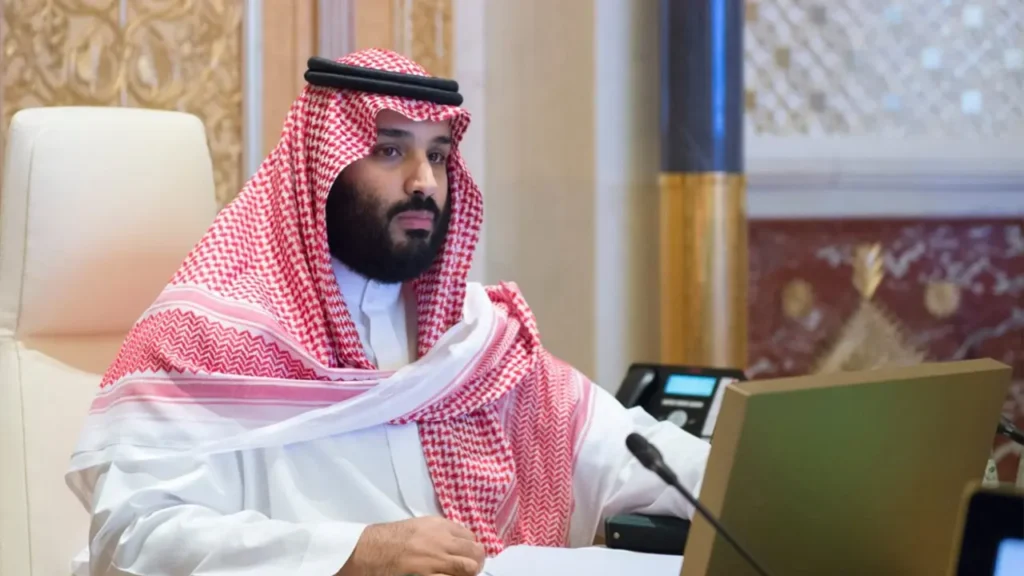The 19th century marks a period that enabled many ideas to become mass movements and transform into political ideologies. Among the most prominent examples of these are socialism and nationalism. For nearly 200 years, these two ideas have remained on our agenda, rising or declining depending on the political conjuncture. In today’s Western world, we continue to witness an intense political competition between the current forms of socialism and the new forms of nationalism. While today’s socialists envision a state (de)formation through identity politics and cosmopolitanism, nationalists call for a strong and effective state through citizenship and localism.
These tendencies can be observed not only in the West but also in the East. Since King Salman came to power and his son, Crown Prince Mohammed bin Salman, became the country’s de facto leader, the Kingdom of Saudi Arabia has entered a new era. The policy program that summarizes this new period is called Vision 2030. This can also be read as both a societal desire to overcome the long-standing Saudi stagnation and a demand of Saudi technocrats.
At the heart of this narrative of transformation, however, a critical question arises: Will the new wave of reforms in Saudi Arabia lead to the country’s liberalization or cosmopolitanization? My answer is no. The new concepts gaining prominence in Saudi Arabia, as well as the emerging practices that strive for entrenchment and institutionalization, point instead to nationalism. What we are witnessing is the rise of Saudi nationalism.
At this juncture, we also encounter a series of typical phenomena often observed during nationalist upsurges: the increased participation of women and youth in public life, the proliferation of sports events, the popularization of alternative historical narratives and the intensification of archaeological studies, the introduction of new national holidays, and the updating of school curricula.
As can be seen, Saudi Arabia is undergoing an intense and tangible transformation process. The concrete manifestations of this transformation can also be measured through entertainment events organized in the country, the growth of the non-oil economy, and the increase in women’s employment.
To analyze the rise of nationalism in Saudi Arabia, it is necessary to examine the country’s religious and traditional sectors of society as well as the sources of state–society relations. At this stage, a meaningful question arises: How does the Saudi leadership manage the relationship between religion and nationalism?
Saudi Arabia adopted the views of Imam Muhammad ibn Abd al-Wahhab—a puritan Salafi movement and interpretation—as its official religious doctrine. Wahhabism, in one sense, can also be interpreted as a Saudi-style Salafism. New religious movements also emerged, influenced by this idea and interacting with many religious currents in the region. The growing influence of the Muslim Brotherhood in the Middle East, combined with Saudi Arabia’s perception of Gamal Abdel Nasser’s Pan-Arabist ideas in Egypt as a threat, played a role in fostering cooperation between the Brotherhood and Saudi Arabia. However, once this cooperation turned into a struggle for authority between the state and the Brotherhood, it recently culminated in a harsh purge.
At this point, to clarify the relationship between religion and the state in Saudi Arabia, it is necessary to take a closer look at the Sahwa (Awakening) Movement. The word Sahwa literally means “awakening.” Emerging in the 1960s, this movement gained mass support and followers throughout the 1980s and 1990s. What made Sahwa particularly interesting was its fusion of two intellectual currents: Wahhabi Salafism and the Muslim Brotherhood. Egyptian and Syrian members of the Muslim Brotherhood were influential in its rise. The Syrian Muhammad Surur (giving rise to “Sururism”) and the Egyptian Muhammad Qutb (the brother of Sayyid Qutb) stood out as two founding figures. The movement began to hold influential positions within educational institutions. The death of Grand Mufti Muhammad ibn Ibrahim Al al-Sheikh in 1969 created a vacuum of religious authority in the kingdom. It should be noted that no appointment to the Saudi Grand Mufti position was made until 1993.
Sahwa sought to fill this vacuum. The oil price boom of the 1970s brought an increase in prosperity, which in turn made radical social changes more visible. At this juncture, it can be said that Sahwa tried to channel and manage the reactivity and mass psychology of society. In the 1970s, Sahwa encompassed a wide range of religious groups. The ideology of the Sahwa Movement came into conflict with traditional Wahhabi Salafism. Wahhabi Salafism maintained that the authority to govern (wilayat al-amr) belonged solely to the ruler. Sahwa, on the other hand, asserted that political activism was part of worship itself, an essential component of Islamic belief.
In 1979, after the armed militant group led by Juhayman al-Otaybi stormed the Kaaba in Mecca, Saudi society was left in shock. The kingdom believed the way to overcome this crisis was to increase state surveillance and oversight of society around religious values. The underlying assumption was that such state-led efforts would eventually leave no space for radical religious currents. This orientation, however, enabled the Sahwa to gain more followers.
The Sahwa’s criticism of the kingdom’s system would take on a new dimension during the 1990–91 Gulf War. In order to support U.S. military mobilization against Iraq, Saudi Arabia allowed nearly 500,000 U.S. troops to be stationed on its soil. This development intensified the criticism voiced by Sahwa scholars. With growing activism, members of the Sahwa in 1991 drafted the “Letter of Demands” (Hitab al-Matalib) addressed to the Kingdom. The Sahwa sought to direct the process through protests and mass petitions within the Kingdom. At this stage, figures such as Salman al-Awda and Safar al-Hawali came to the forefront of the movement, alongside others like Muhammad al-Massari and Saad al-Faqih.
By 1993, the Kingdom imposed restrictions on Sahwa activities, including travel bans and arrests. Salman al-Awda and Safar al-Hawali were arrested in 1995. After their release in 1999, they tried to adopt a more conciliatory stance toward the regime. With the Arab Spring reaching an influential level across the Middle East in the 2010s, members of the Sahwa Movement began to argue that the time for reform in the Kingdom had come. The designation of the Muslim Brotherhood as a terrorist organization in Saudi Arabia in 2014 foreshadowed difficult days ahead for the Sahwa. In 2017, arrests of individuals affiliated with the movement began. They were purged from a number of institutions and organizations. More importantly, they were coded as representatives of a discourse and practice opposed to the “new Saudi Arabia.”
The Sahwa’s influence in Saudi society appears to have been far-reaching. They took positions on social and cultural matters. They facilitated the participation of many young Saudis in the Afghan Jihad during the Soviet–Afghan War. Yet the Sahwa Movement is now in a restricted and repressed state. The main reason for this is that Saudi Arabia’s new ruling elite has embraced a nationalist vision focused on reform within the country, rather than a transnational idea of ummah-oriented solidarity. While the Sahwa gained popularity through opposition to the increasing influence of the United States in Saudi Arabia, the events of September 11, and the Arab Spring of 2011, its activities were curtailed because it developed a discourse that posed an alternative to state authority. The vacuum created by the decline of the Sahwa is now being filled by the rise of nationalism that has accompanied Crown Prince Mohammed bin Salman’s Vision 2030 programs since 2017.
The nationalism rising in Saudi Arabia essentially draws upon dynamics similar to those of nationalism, populism, and conservatism that have also made their impact felt in the West since the 2000s. Skepticism toward ideologies that promote transnational cooperation continues to be a global phenomenon, and its local manifestations are expanding and taking root with each passing day.
In Saudi Arabia, reforms concerning women can be cited as examples: the lifting of the driving ban, the reduction of male dominance, and the possibility of traveling abroad without male guardianship. Another significant development has been the reduction of the influence of the religious police. The most critical turning point in this regard came in 2016, when the powers of the Committee for the Promotion of Virtue and the Prevention of Vice (Hay’a al-amr bi-l-maʿrūf wa-n-nahy ʿan al-munkar) were severely curtailed. Through its religious police (the mutawa), this institution had heavily restricted women’s freedom in public life. The dismantling of this body can be seen as a crucial milestone in the liberation of Saudi women.
Saudi-style outward opening and controlled liberalization steps present a significant experiment that must be closely followed in terms of state–society relations in the Middle East.
In our second article, we will focus on how economic transformation in Saudi Arabia has reshaped Saudi society and strengthened Saudi nationalism.


